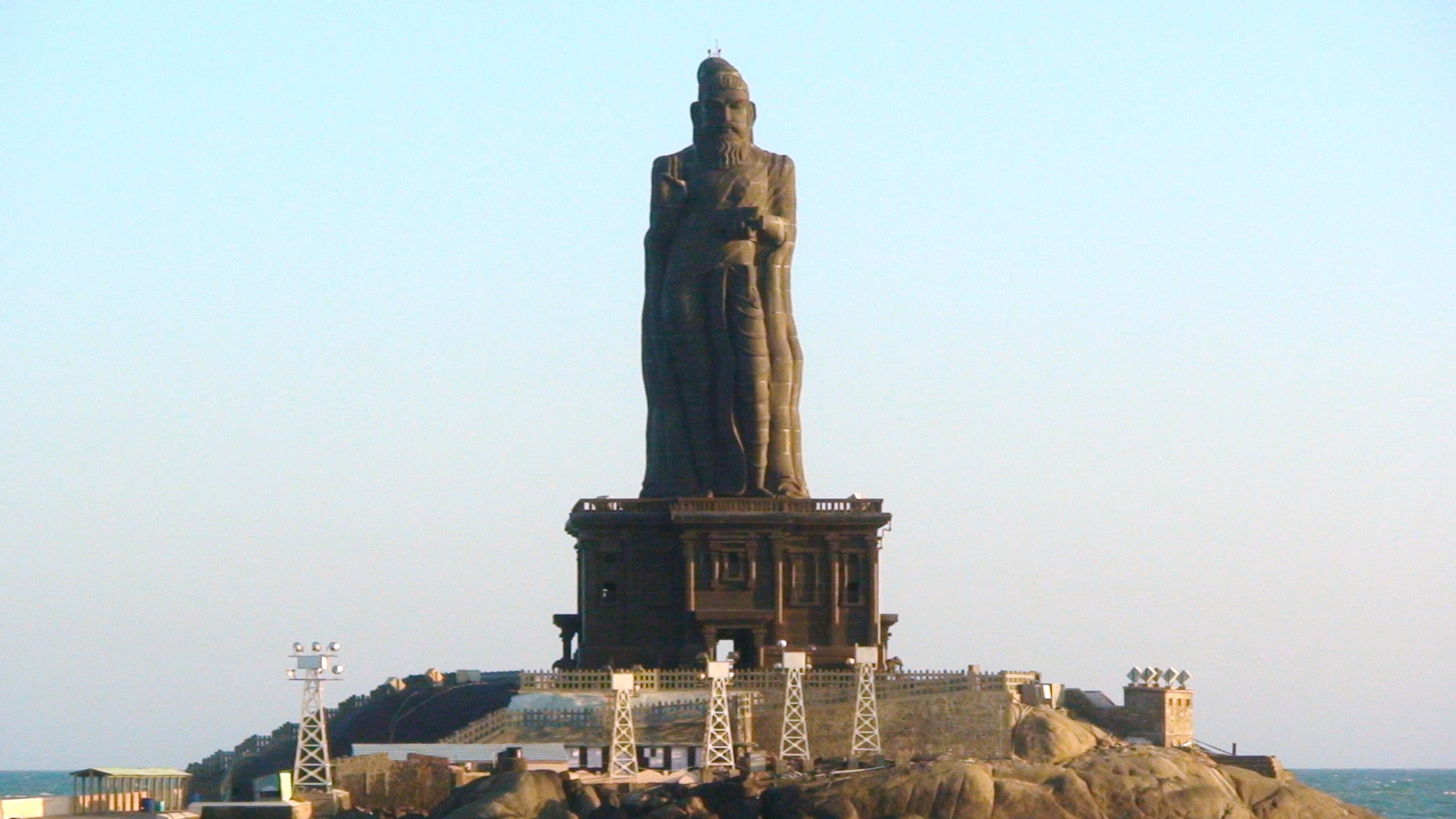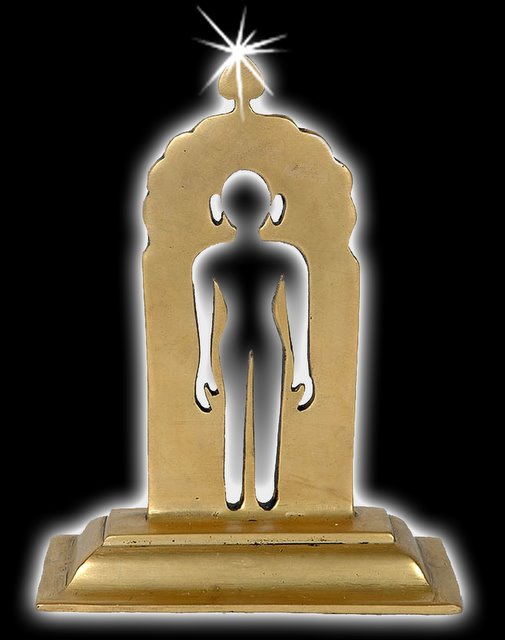|
Marunthuvazh Malai
The Marundhuvazh Malai, a part of Sanjeevi hills is also known as the Marundhu Vazhum Malai/Maruthwamalai ("the abode of medicinal herbs"), forms the part and the southernmost tip of the Western Ghats in Agasteeswaram taluk of Kanyakumari district of Tamil Nadu, India. People living in southern Kerala call it "Maruthuva Mala". The hill stretches for more than a kilometer and reaches a height of 800 feet at the highest point, from which one can see the 'V' shape of the Indian subcontinent, as well as the three seas (the Bay of Bengal, Indian Ocean, and Arabian Sea), each with different shades of blue, and coconut trees with different shades of green. It is about 1 km from Pothaiyadi (a place along NH44 and NH66), and 10 km from Kanniyakumari town. This hill is also believed to be known in Ayyavazhi mythology as Parvatha Ucchi Malai. Apart from the mythology, this hill is historically related to the life of Vaikundar. A few theologians consider this hill as sacred, ... [...More Info...] [...Related Items...] OR: [Wikipedia] [Google] [Baidu] |
Ayyavazhi Holy Sites
The holy places of Ayyavazhi includes the following Primary Pathis # Swamithope pathi # Ambala Pathi # Mutta Pathi # Thamaraikulam Pathi # Poo Pathi Other Pathis # Vaikunda pathi # Vakai Pathi # Avathara Pathi Primary Thangals # Chettikudiyiruppu # Agastheeswaram # Paloor # Sundavilai # Vadalivilai # Kadambankulam # Pambankulam Other Important Thangals # Vellai Chuvamiyar Pathi # Veppankattu Pathi # Pazhavar # Sidambara puram # Kalakkadu # Thysaiyan Vilai Other holy sites # Vaikunda Malai # Marunthuvazh Malai See also *List of Ayyavazhi-related articles *Pancha pathi Pancha pathi (Tamil language, Tamil: பஞ்ச பதி, "the five abodes of God") are the five important pilgrim centers of Ayyavazhi. These are also considered as the primary Pathis and as worship centers of Ayyavazhi with primary status ... References * R. Shunmugam (2000), Nadar Kulathi Narayanar Avataram, Nadar Kuladeepam Publications. {{Ayyavazhi Holyplaces Ayyavazhi ... [...More Info...] [...Related Items...] OR: [Wikipedia] [Google] [Baidu] |
Pancha Pathi
Pancha pathi (Tamil language, Tamil: பஞ்ச பதி, "the five abodes of God") are the five important pilgrim centers of Ayyavazhi. These are also considered as the primary Pathis and as worship centers of Ayyavazhi with primary status. The first pathi is Swamithope pathi itself and is the headquarters of Ayyavazhi. The other Pathis are Muttappathi, Tamaraikulampathi, Thamaraikulam Pathi, Ambalappathi and Pooppathi. All the five of the Panchappathis are located within a Fifteen-kilometer circle of Kanyakumari (town), Kanyakumari, the land end of the Indian Sub-continent. Swamithope pathi Swamithoppe is the religious headquarters of Ayyavazhi. This was considered also as primary among the Panchappathi. This was the place where The Tavam of Vaikundar, Great Tavam of Ayya took place. The land's holiness is described in Akilattirattu Ammanai that ''Parthiban'', the legendary Arjuna made penance to get ''Pasupathasthiram'' from Lord Shiva, Siva. This was also the birthplac ... [...More Info...] [...Related Items...] OR: [Wikipedia] [Google] [Baidu] |
Mylaudy
Mylaudy is one of the panchayat town, town panchayats in Kanniyakumari district in the States and territories of India, Indian state of Tamil Nadu. It is a town rich in fields, mountains, rivers and natural resources. Before 1950, Mylaudy was part of South Travancore. Now it is in Kanniyakumari district of Tamil Nadu. It consist of Post office (Mylaudy Post office-629403), Aavin & Arokya Milk Stores, Weekly Vegetables Market (Wednesday & Saturday), Assistant Engineer of PWD office, TNEB Office (Junior Engineer in Tamil nadu Electricity Board Office, Mylaudy), Mylaudy Village Office, Cooperative Bank Mylaudy Branch, State Bank of India Mylaudy Branch, 3 Automated teller machine, ATM's (State Bank of India, SBI, Tamilnad Mercantile Bank, TMB, India one) Facilities and 4 Gasoline pump, Petrol Pump's (Indian Oil Corporation, Indian Oil, Essar Group, Essar, Hindustan Petroleum, HP, Bharat Petroleum, Bharat) Facilities also available. Transport Facilities Government of Tamilnadu ... [...More Info...] [...Related Items...] OR: [Wikipedia] [Google] [Baidu] |
Kanyakumari
Kanyakumari (Tamil; / kəɳjɑkʊmɑɾiː/; referring to Devi Kanya Kumari, officially known as Kanniyakumari, formerly known as Cape Comorin) is a town and a municipality in Kanyakumari district in the state of Tamil Nadu, India. It is the southernmost tip of the contiguous Indian subcontinent and the southernmost city in mainland India, and thus it is informally referred to as "The Land's End". Kanyakumari town is about from Thiruvananthapuram and south of Nagercoil, the headquarters of Kanyakumari district. Kanyakumari is a popular tourist destination and pilgrimage centre in India. Notable tourist spots include its unique sunrise and sunset points, the '' Thiruvalluvar Statue'', and Vivekananda Rock Memorial off the coast. Lying at the tip of peninsular India, the town is bordered on the west, south, and east by the Laccadive Sea. It has a coastline of stretched along these three sides. On the shores of the city is a temple dedicated to the goddess Kanya Kumari ... [...More Info...] [...Related Items...] OR: [Wikipedia] [Google] [Baidu] |
Nagercoil
Nagercoil, natively spelt as Nāgarkovil (, "Temple of the Nāgas", or Nagaraja-Temple), is a Municipal Corporation city and the administrative headquarters of Kanyakumari District in Tamil Nadu state, India. Situated close to the tip of the Indian peninsula, it lies on an undulating terrain between the Western Ghats and the Arabian Sea. Nagercoil is a centre for a range of economic activities in the small but densely-populated Kanyakumari District. Economic activities in and around the city include tourism, wind energy, IT services, marine fish production and exports, rubber and cloves plantations, agro-crops, floral production, manufacture of fishnets, rubber products among other activities. 'Nagercoil Cloves' is a distinct quality of dried cloves in the spices market, noted for its aroma and medicinal value. Cloves, pepper and other spices are grown in estates in the Western Ghats, outside the town. Nagercoil is also the nearest city to the ISRO Propulsion Comple ... [...More Info...] [...Related Items...] OR: [Wikipedia] [Google] [Baidu] |
Saint
In Christianity, Christian belief, a saint is a person who is recognized as having an exceptional degree of sanctification in Christianity, holiness, imitation of God, likeness, or closeness to God in Christianity, God. However, the use of the term ''saint'' depends on the context and Christian denomination, denomination. In Anglican Communion, Anglican, Oriental Orthodox, and Lutheranism, Lutheran doctrine, all of their faithful deceased in Heaven are considered to be saints, but a selected few are considered worthy of greater honor or emulation. Official Ecclesiastical polity, ecclesiastical recognition, and veneration, is conferred on some denominational saints through the process of canonization in the Catholic Church or glorification in the Eastern Orthodox Church after their approval. In many Protestant denominations, and following from Pauline usage, ''saint'' refers broadly to any holy Christian, without special recognition or selection. While the English word ''saint'' ... [...More Info...] [...Related Items...] OR: [Wikipedia] [Google] [Baidu] |
Siddha
''Siddha'' (Sanskrit: '; "perfected one") is a term that is used widely in Indian religions and culture. It means "one who is accomplished." It refers to perfected masters who have achieved a high degree of perfection of the intellect as well as moksha, liberation or Enlightenment in Buddhism, enlightenment. In Jainism, the term is used to refer to the liberated souls. ''Siddha'' may also refer to one who has attained a siddhi, paranormal capabilities. Siddhas may broadly refer to siddhars, naths, asceticism, ascetics, sadhus, or yogis because they all practice sādhanā. Jainism In Jainism, the term ''siddha'' is used to refer the liberated souls who have destroyed all Karma in Jainism, karmas and have obtained Moksha (Jainism), moksha.They are free from the transmigratory cycle of birth and death (''Saṃsāra (Jainism), saṃsāra'') and are above ''Arihant (Jainism), Arihantas'' (omniscient beings). Siddhas do not have a body; they are soul in its purest form. They r ... [...More Info...] [...Related Items...] OR: [Wikipedia] [Google] [Baidu] |
Dattatreya
Dattatreya (, ), Dattā or Dattaguru, is a paradigmatic Sannyasi (monk) and one of the lords of yoga, venerated as an avatar of Lord Vishnu. Three Hindu gods Brahma, Vishnu, and Shiva, who are also collectively known as the Trimurti, incarnated in form of Dattatreya, Chandra and Durvasa as son of Sage Atri and Devi Anusuya as per the texts such as the Bhagavata Purana, the Markandeya Purana, and the Brahmanda Purana. In iconography, he is often represented as a monk with three heads. However sources of the Trimurti's taking avatar in a single body and such iconography is unknown. Several Upanishads are dedicated to him, as are texts of the Vedanta-Yoga tradition in Hinduism. One of the most important texts of Hinduism, Avadhuta Gita (literally, "song of the free soul"), is attributed to Dattatreya. Over time, Dattatreya has inspired many monastic movements in Shaivism, Vaishnavism, and Shaktism, particularly in the Deccan region of India, Maharashtra, Gujarat, Madhya Prades ... [...More Info...] [...Related Items...] OR: [Wikipedia] [Google] [Baidu] |
Vallabha
Vallabha, also known as Vallabhācārya or Vallabha Dīkṣita (May 7, 1478 – July 7, 1530 CE), was the founder of the Krishna, Kr̥ṣṇa-centered Pushtimarg, Puṣṭimārga sect of Vaishnavism, and propounded the philosophy of Shuddhadvaita, Śuddhādvaita. His biography is depicted in several sectarian Puṣṭimārga hagiographies. Born into a Telugu Brahmin family, Vallabha studied Hindu philosophy from early age, then traveled throughout the Indian subcontinent, particularly the Braj (Vraja) region, for over 20 years. He became one of the important leaders of the devotional Bhakti movement. He won many philosophical scholarly debates against the followers of Advaita Vedanta, Advaita Vedānta. He began the institutional worship of Shrinathji, Śrī Nāthajī on Govardhana Hill. He acquired many followers in the Indo-Gangetic Plain, Gangetic plain and Gujarat. After his death, the leadership of his sampradāya passed to his elder son Gopīnātha. Vallabha's philosophy pr ... [...More Info...] [...Related Items...] OR: [Wikipedia] [Google] [Baidu] |
Narayana Guru
Sree Narayana Guru () (20 August 1856 – 20 September 1928) was a philosopher, Spiritual Leader, spiritual leader and Social Reformer, social reformer in India. He led a Kerala reformation movement, reform movement against the injustice in the Caste system in Kerala, caste-ridden society of Kerala in order to promote moksha, spiritual enlightenment and social equality. A quote of his that defined his movement was "one caste, one religion, and one god for all human beings." He is the author of the Advaita Vedanta, Advaita poem Daiva Dasakam, which is one of the most used poem in Kerala for community prayer.ദൈവദശകദർശനം, ഡോ.ജി. അനിൽകുമാർ, കുരുക്ഷേത്ര പ്രകാശൻ, കൊച്ചി, 2010 ഏപ്രിൽ Biography Narayanan, né Nanu, was born on 20 August 1856 to Madan Asan and Kuttiyamma in an Ezhava family of ayurvedic physicians, in the village of Chempazhanthy near Thiruvananthapuram, in th ... [...More Info...] [...Related Items...] OR: [Wikipedia] [Google] [Baidu] |
Vaikundar
Ayya Vaikundar, also known as Siva Narayana or Vaikunda Swami, was the founder of the Ayyavazhi faith. The Ayyavazhis believe him to be the first and foremost Purna avatar of Eka-Paran and the god Vishnu (Narayana). As per Ayyavazhi mythology detailed in their scriptures, Ayya Vaikundar incarnated in 1833, when he rose from the sea of Tiruchendur in the mortal shell of Vaikundar. Ayya Vaikundar is a central character in the narratives and teaching of the Ayyavazhi scripture Akilathirattu Ammanai (Akilam). The Ayyayazhis believe that he will be instrumental in the destruction of Kali and establishment of Dharma Yukam. As per Ayyavazhi scriptures, Ayya Vaikundar is the supreme God in his own right. Most of the preachings and activities found in Akilam and other texts about the life of Ayya Vaikundar was documented historically and detailed in critical contemporary sources externally as well. Though the prime features of Ayya Vaikundar's mission is revealed through Akilath ... [...More Info...] [...Related Items...] OR: [Wikipedia] [Google] [Baidu] |




